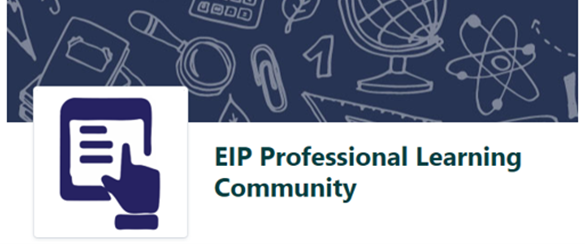The Early Intervention Program (EIP) is designed to provide interventions for students who are at risk of not reaching or maintaining their academic grade level based on their performance on state or national assessments or performance measures in English Language Arts/Reading, Mathematics, or both in order to help them meet grade-level expectations within the shortest possible time. Early Intervention programming must include targeted, evidence-based interventions, frequent progress monitoring, and clear entrance and exit criteria based on grade level performance. It is not the intent of the program for students to be assigned to EIP on a continuing or permanent basis.
EIP Moves to the GaDOE Policy Division
Effective March 1, 2022 please forward all EIP related questions to the contact listed on the right.
EIP Professional Learning Community
Please click the graphic below to join our EIP PLC on GaDOE Community. The purpose is to build a community of practice, share intervention resources, discuss promising staffing practices, and other topics related to world of EIP in the state of Georgia.

Guidance and Rubrics
_________________________
Senate Bill 59
During the 2021 legislative session, the Georgia General Assembly determined EIP required certain provisions that are necessary for the implementation of effective practices. Senate Bill 59 mandates schools and systems no longer waive provisions required in O.C.G.A. § 20-2-153 and State Board Rule 160-4-2-.17. Effective July 1, 2021, EIP requirements are no longer waivable. EIP requirements are mandatory for all Local Education Agencies (including systems with Charter or Strategic Waiver contracts) and locally approved charter schools. The following EIP instructional models outlined in state law and in SBOE rule are funded in FY23:
1. Self-contained
2. Pull-out
3. Class Augmentation
4. Reading Recovery
5. Innovative
Instructional models that are no longer in compliance can be locally funded using
Elementary and Secondary School Emergency Relief (ESSER) I, ESSER II, and
ESSER III (including learning loss) funds. ESSER funds do not have “supplement
versus supplant" requirements.
Rules

